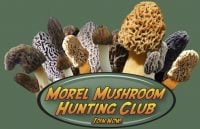Terana caerulea
Terana caerulea (or Terana coerulea), commonly known as the cobalt crust fungus or velvet blue spread, is a saprobic crust fungus in the family Phanerochaetaceae. Usually found in warm, damp hardwood forests on the undersides of fallen logs and branches of deciduous trees, this unique fungus has been described as “blue velvet on a stick”.This species was chosen as fungus of the year for 2009 by the German Mycological Society.
Description:
Terana caerulea is resupinate, meaning the fruiting body lies on the surface of the substrate, with the hymenium exposed to the outside. The fruiting body is 2–6 mm thick. It is dark blue with a paler margin, with a velvety or waxy texture when moist, but crusty and brittle when dry. The fruiting body is firmly attached to its growing surface except at the edges. In nature, the fungus surface is typically found pointing downward, which helps facilitate spore dispersal. It usually grows on dead deciduous wood, often ash and hazel. The spore print is white. Spores are ellipsoidal, smooth, thin-walled, hyaline or pale blue, with dimensions of 7–12 by 4–7 µm. The four-spored basidia are club-shaped, hyaline or blue, with dimensions of 40–60 by 5–7 µm.
Distribution:
The cobalt crust has a worldwide distribution in warmer climates, and has been reported from Asia, Africa, New Zealand, North America, the Canary Islands, Europe, Taiwan, Thailand, and Turkey.
Chemistry:
The blue pigment of this fungus was shown to be a mixture of polymers structurally related to thelephoric acid. When activated by external treatments such as high temperature (42 °C (108 °F)), exposure to vapors of toxic solvents, or contact with a water-toluene mixture, T. caerulea produces an antibiotic named cortalcerone (2-hydroxy-6H-3-pyrone-2-carboxaldehyde hydrate), that inhibits the growth of Streptococcus pyogenes. The metabolic biosynthesis of this compound starting from the initial precursor glucose has also been studied. Compounds with so-called “benzobisbenzofuranoid” skeletons have been isolated and identified from T. caerulea, namely, corticins A, B, and C.
References:
https://www.loyno.edu/lucec/natural-history-writings/cobalt-crust-terana-caerulea-lovely-fungus

























